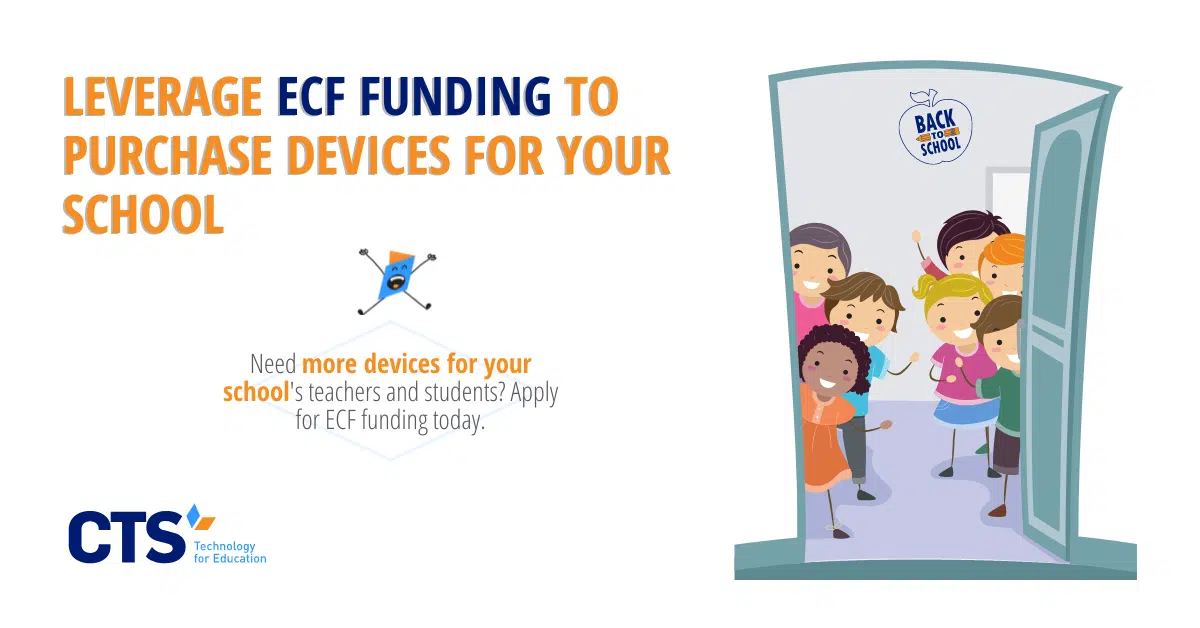Schools can apply for ECF funding until midnight on May 13.
Schools have until midnight on May 13 to apply for an additional round of Emergency Connectivity Funds (ECF), which help schools support remote learning efforts. Enacted as part of the American Rescue Plan, the $7.17 billion program provides funding to cover the cost of eligible equipment and services such as laptop and tablet computers, Wi-Fi hotspots, and modems necessary for remote learning.
Schools eligible to participate in USAC’s E-rate program are automatically eligible to apply for ECF funding, even if they haven’t participated in E-rate previously. Likewise, just because a school has returned to in-person instruction doesn’t mean its ineligible for funding: schools whose teachers or students would otherwise lack broadband access at home, for example, can apply for funding to support unmet remote learning needs.
Unlike USAC’s E-rate program, however, schools need not conduct a competitive bidding process, unless state, local, or Tribal law requires otherwise. Schools should therefore be able to receive and spend their funds quickly, enabling students to access critical online instructional resources.
What can schools purchase with ECF funding?
ECF funding is available to cover the following equipment: laptops and tablet computers, Wi-Fi hotspots, modems (including air cards), routers, and devices that combine a modem and router. Schools can also use the funds to provide broadband service for students and teachers who would otherwise lack a home internet connection. In “limited circumstances” schools may also be able to use their ECF funding to construct new networks and purchase equipment needed for data-casting services.
We expect many school leaders will use their ECF funding to purchase student devices, such as Chromebooks, as well staff devices. ECF caps support for student and staff devices at $400, including the (often necessary) cost of licenses, software, or content filtering and security systems.
While the program was created to meet schools’ remote learning needs, devices purchased with ECF funds need not be used exclusively outside the school building. The rules only prohibit schools from requesting support for devices and services used solely on campus, so schools can use ECF funding to purchase devices that, while used primarily off-campus, have some role to play during the school day.
How does the ECF application process work?
A third ECF funding application filing window opened today, April 28, and will close at midnight on May, 13, 2022. The two previous filing windows closed on August 13 and October 13, respectively, but allowed schools to secure funding for similar services.
As part of the application process, schools are required to identify their “best estimate” of their school’s unmet remote learning needs. Schools might, for example, base their requests on the number of students who they believe don’t have access to connected devices at home, broadband connections, or both. Schools need not conduct surveys to determine their existing needs, but ECF requires schools to explain how and when they collected the information that forms the basis of their bid. Currently, applications are restricted to requesting one fixed broadband connection per location and only one connected device or Wi-Fi hotspot per student.
Once schools have submitted their applications, USAC and the FCC will review applications on a rolling basis; applicants will then receive a Funding Commitment Decision Letter (FCDL) approving or denying their funding requests. Schools can check the status of an existing application through the ECF’s Open Data platform.
Assuming the school’s ECF funding application is approved, the school will eventually need to file for reimbursement from the program, meaning the school will need to reconcile the dollar amount it requested with the dollar amount of eligible devices and services it actually purchased. As an example, if a school requested ECF funding for broadband services at 100 students’ homes, but later determined that only 90 students had unmet broadband need, it would only seek reimbursement for services provided to 90 students. Schools should maintain documentation of all program-related expenditures to support their reimbursement applications.
Finally, schools may apply to change the provider listed on their original application by submitting a request through ECF’s Post-Commitment Request Form. The same goes for changes to the make or model of devices the school originally requested.
At CTS, we help schools accomplish their unique missions.
Our team has partnered with more than 60 schools across the United States to keep up with the challenges and opportunities of the digital world. We understand the constraints of the school or non-profit environment and are ready to bring our expertise to bear to solve your school’s most complex IT challenges. From device procurement and management to student data and compliance support, our team offers a full suite of school IT services that can help ensure your school’s technology investments add value to school programming. Contact us today to learn more about our services and how we can help your school accomplish its unique mission.




